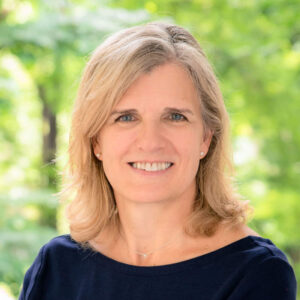
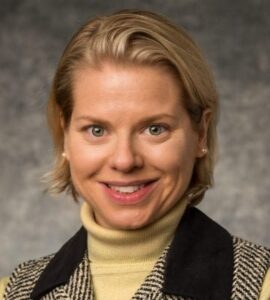
The Community Fund of Darien and the Thriving Youth Darien Survey
Janet King will provide an overview of The Community Fund and its key elements: Grants, Thriving Youth Darien, Human Services Planning Committee, Volunteer Hub, and Youth Programs. She will share data and trends on key social and welfare issues in our area and how they relate to the work of TCF and discuss TCF grant process and funding goals, as well as the Grant Panelist program and volunteer opportunity.
Susannah Lewis will provide an overview of the recently completed (October, 2023) bi-annual Thriving Youth Darien Survey of Darien middle school and high school students that provides insight into their mental health and substance use patterns.
Janet King has been the Executive Director of The Community Fund of Darien (TCF), since 2018. As Executive Director, she oversees all the operations of TCF, which since 1951 has granted $27,000,000 to local nonprofits. The Community Fund of Darien also convenes Thriving Youth Darien, and Human Services Planning Council, and runs four youth volunteer programs for middle and high school-aged students, as well as The Volunteer Hub for Darien adults looking for volunteer opportunities.
Prior to joining the Community Fund of Darien, Janet was the former Director of Volunteers at Person to Person where she recruited, trained, and organized more than 4,000 volunteers, working alongside clients, corporate teams and community groups. She has experience in program and special event management, employee training, marketing, and fundraising from a variety of companies including Western Athletic Clubs, Brooks Brothers, Esprit de Corp, and May Company. She was raised in Cleveland, Ohio and is a graduate of The Ohio State University. She has volunteered with Tokeneke Parents Teacher Association, Saint Luke’s Parish, Darien Junior Sailing Team, Darien Youth Soccer, Stamford Hospital and Chi Omega alumnae. She serves on the Town of Darien Human Services Commission. Janet has lived in New York City and San Francisco and currently resides in Darien with her husband and enjoys the company of their two sons, a golden retriever and two cats.
Susannah Lewis works in the field of public health, currently as Director of Community Relations and the New Canaan Urgent Assessment Program at Silver Hill Hospital in New Canaan. Prior to this role she was Mental Health Program Coordinator for Correctional Services with New York City Health and Hospitals. She is currently a board member of the Community Fund of Darien and co-chairs Thriving Youth Darien. She is also the Treasurer for the Connecticut Chapter of the National Alliance on Mental Illness (NAMI). Susannah is a past vestry member at St. Bartholomew’s Church in Manhattan and chaired its Development Committee.
Susannah received her Bachelor of Arts in Ancient Greek and Latin from Wellesley College and her Masters of Public Health in Epidemiology from Columbia University’s Mailman School of Public Health. Susannah and her husband William have lived in Darien since 2015 and are members of St. Luke’s Parish. They have a year-old daughter, Annabelle, and an exceptional rescue poodle, Master Kippy.
Speaker Summary
Janet King took us through an overview of The Community Fund pf Darien and how we can participate in The Fund’s grant review and award process. This was followed by a presentation of the bi-annual Darien Youth Survey of middle and high school students about their mental health and substance use patterns. The talk was followed by an engaging Q&A session that focused primarily on thoughts, concerns and suggestions related to the survey.
Janet discussed the history of The Fund, it’s $27,000,000 in grants since its inception in 1951, and their intended impact “to initiate solutions, build collaboration, and implement and support programs to strengthen youth, adults, and families for lasting impact in Darien, Norwalk and Stamford”. She shared data about social issues being faced in these 3 communities including hunger, homelessness, and poverty levels, noting that even in Darien 4%, or 840 homes, have household incomes below the poverty level. She then discussed the 4 key areas of impact for The Fund (basic needs, workforce development, community health and youth success), each of which received between $168,000 and $214,000 in grants last year. Janet then spoke briefly about the 4 Youth Program groups, the Thriving Youth Darien Survey, the Human Services Planning Council (which convenes non-profit, government, healthcare, safety and educational leaders to address social service needs), and The Volunteer Hub which matches residents seeking a local volunteer opportunity with appropriate organizations. She briefly mentioned their two key fundraising activities (The Darien Road Race and Designed to Dine) before closing with an explanation of their grant review and award process and how DMA members can participate in this process to ensure The Fund is investing in the most effective local non-profits.
Susannah Lewis then presented the results of the just completed Darien Youth Survey on substance use and mental health issues. From a timing and topicality perspective, the results were reported to the town and school leadership just last week and were featured in both the Norwalk Hour and Stamford Advocate on the day she shared them with us, as well as in this week’s The Darien Times. This was the 6th iteration of the survey which was first conducted in 2008.
The results, based on a 79% response rate for 6-12th graders (with the 6th grade included in the survey for the first time this year), showed that Darien teens responded favorably for individual and community “protective factors” (with the noted exception of only 52% knowing where to go for help with substance abuse). While at much lower levels than the protective factors, “risk factors” were still at concerning levels (35% feeling worse due to social media, 30% losing sleep due to gaming and a surprising 22% engaged in gambling activities). Noteworthy was that youth who identified as LGBTQ+ (9% of the population) reported substantially lower levels of protective factors and higher on risks, putting them at greater overall mental health risk.
Susannah then shared the results regarding alcohol use. There is almost no use prior to high school. Usage increases by grade but jumps dramatically for 12th graders to an alarming 50% in the past 30 days, more than double for 10th and 11th graders. On a positive note, stated use is down dramatically from 2018 which suggests the positive impact of programs to improve education/reduce usage. Compared to other towns in the area, alcohol use in Darien is similar to most other towns with the notable exception of 12th graders which is substantially higher for Darien. In subsequent discussions about this, Susannah suggested several factors that could be causing this, including a generally higher acceptance of drinking in Darien (i.e., the town appears to have more of a “drinking culture”). Use of other substances (marijuana, vaping, smoking, prescription drugs) were all down dramatically from 2018 and at generally low levels (.3 – 4%). In looking at the culture of drinking, the most notable findings were that peer pressure/involvement matters, alcohol is readily available, nearly 25% stated they drink at home with their parents present, and one of the top reasons for not drinking was parents being strict about it. She closed with the statistic that Darien teens are 9X more likely to drink if they don’t think their parents disapprove.
When it comes to mental health, 1 in 4 high schoolers and 1 in 5 middle schoolers report persistent sadness, hopelessness and anxiety. While these are concerning levels, they are generally comparable to other local towns and well below state and national levels. Comparing males to females, boys had generally lower levels of these conditions but scored worse on the impact of gaming and had higher rates of bullying. Girls reported higher rates of sadness, anxiety and loneliness, restrictive eating behavior, self-harm/suicidal ideation and negative social media consequences.
Depression and suicide data are clearly concerning, with 20+% feeling so sad, hopeless, or anxious almost every day for 2+ weeks that it impacted their usual activities. 9% (163 respondents) seriously considered suicide, 6% (115 respondents) made a plan for how they would do it, and 2% (46 respondents) reported attempting suicide. While well below state and national levels, the fact that this many of our youth reported these behaviors is very concerning.
Susannah summarized by stating there’s evidence that town initiatives have helped move the needle in the right direction but there is still work to do, especially in setting clear family rules around substance (primarily alcohol) use and relaxing them at too young an age. She also emphasized the heightened concerns and needs for the LGBTQ+ and minority communities in town who feel less protected and are at greater mental health risk. She closed by sharing three programs that are being supported by the town/The Fund to continue to inform and support Darien Youth.
Video Presentation
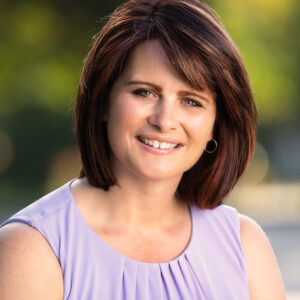
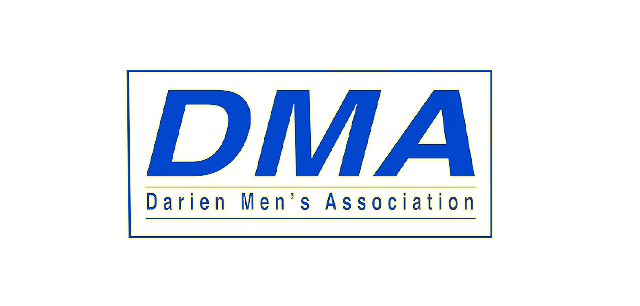
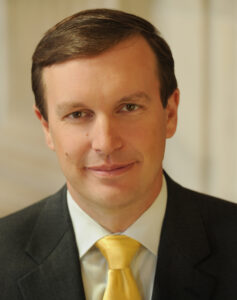
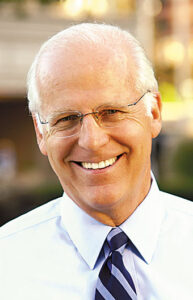


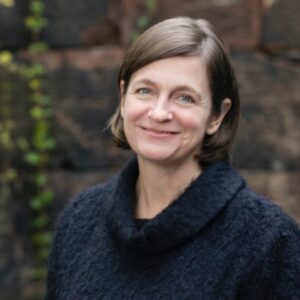
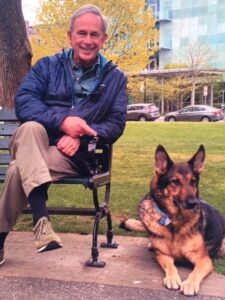
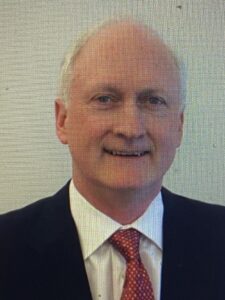 The French and Indian War: The Role of Native Americans as a Prelude to the American Revolution
The French and Indian War: The Role of Native Americans as a Prelude to the American Revolution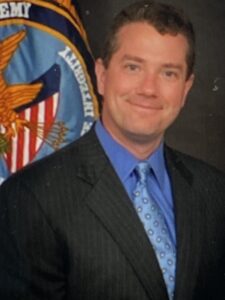 Darien School Safety and Security
Darien School Safety and Security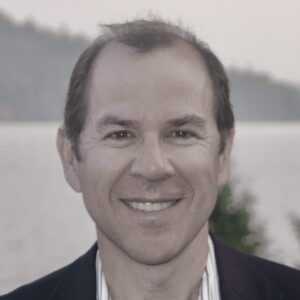 It’s Complicated: The Decision Around Dropping the Atomic Bombs on Japan.
It’s Complicated: The Decision Around Dropping the Atomic Bombs on Japan.
